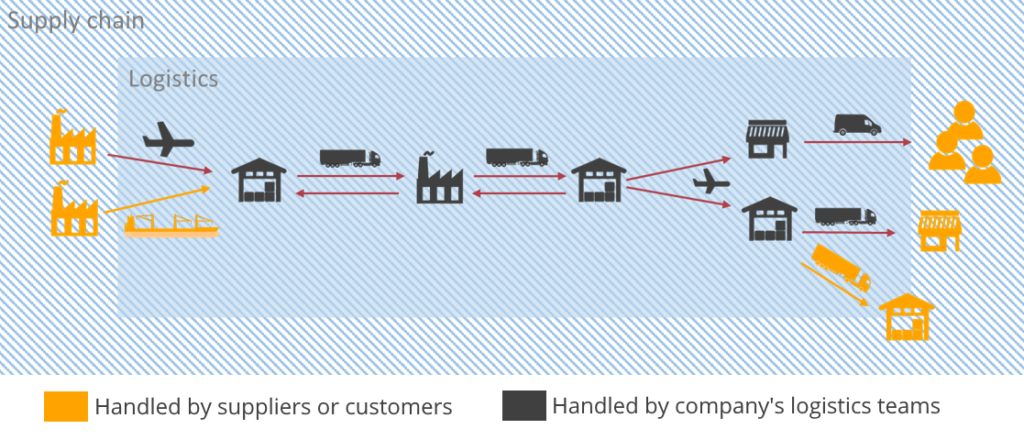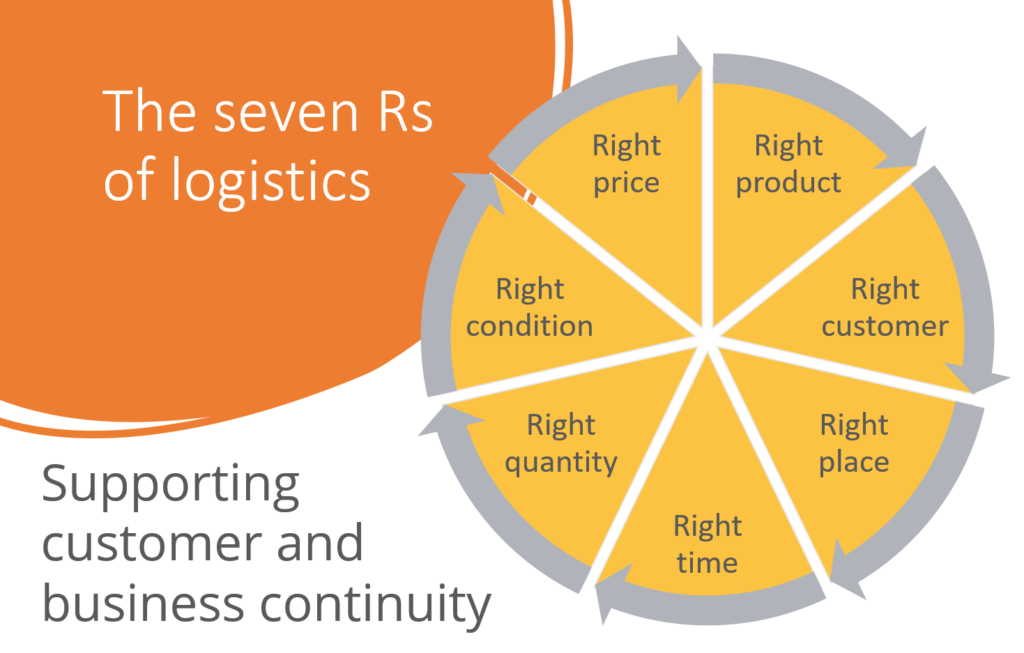Logistics can be defined as the detailed planning, organization, and implementation of a complex operation.
In layman’s terms and in a general business sense, logistics relates to the process of managing the flow of goods or resources from their acquisition point to their final destination and supporting all possible intermediary steps notably from a transport, storage or distribution perspective.
While the need for logistics has existed since ancient times (think about all the planning and organization behind the Egyptians pyramids, the Great Wall or the Roman roads), the term itself and its recognition as a specific activity and center of competency only appeared in the early 19th century and is military in origin.

As armies increased in scale and complexity, so did the logistics needs (think about the evolution from warriors bringing their sword to battle to the need to provide artillery with transport means and ammunition), making this function more and more critical.
In fact the closest documented version of the term “logistics”, is linked to the French word “logistique”, and was found in historical military records dating from Napoleon’s era. It is said to have evolved from a French military rank title “maréchal des logis” (marshal of lodgings) and the word “loger” (to lodge).
The industrial revolution, and its related growth in international trade and consumption, encouraged businesses to adopt a more systematic approach to their organization – taking the learning of the military and applying them to their business models.
This resulted in logistics as being identified and recognized as an official business function in the second half of the 20th century.
In the modern business world, companies implement complex supply chains to acquire or produces goods and distribute them to their customer, and inside these supply chains, logistics is responsible for the management and optimization of the transport, storage and distribution activities and possibly some production related ones.

The logistics departments and teams will, with a strong focus on organization, optimization, timeliness and adaptability, support all the material flows of a supply chain by, for example:
- Creating an inbound logistics chain – building the needed network to bring goods from their sourcing location to their transformation or storage location, [Inbound logistics]
- Ensuring the transport of semi-finished products and supplies from the different production locations, [Inter-company and production logistics]
- Organizing and managing the storage the supplies, semi-finished, or finished products until they are needed, [Warehouse management/logistics]
- Distributing the finished products or goods to the customers, [Outbound logistics]
- Managing the return of defective goods, of waste products or of reusable packaging material, [Reverse logistics]
So in short, what is logistics?
In the business sense, Logistics is a function, which inside a supply chain, is responsible for the efficient organization of the movement and storage of goods and resources, and for ensuring that the Right product, reaches the Right customer, at the Right place and Right time, and in the Right quantity and Right condition and all this, of course, for the Right price – the Seven Rs of logistics.

If you want to learn more about what logistics is and the definition of logistics – please refer to our online logistics course “Introduction to logistics” where in this 60 minutes interactive eLearning we introduce logistics, what it is, talk about its roles inside the supply chain, review its keystones and using examples go over its main functions.
You can use the coupon INTROART to get 30% off this course!
Recommended reading – “The supply chain – its material and logistics flows“

